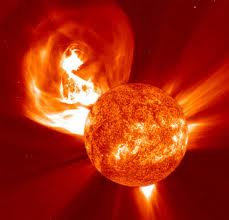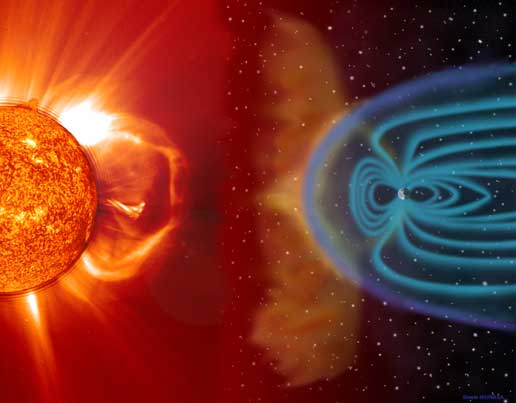Blog Editor’s Note: The 1859 “Carrington Event” coronal mass ejection was so powerful it induced currents in telegraph wires strong enough to set telegraph offices on fire. A smaller event in 1921 “the NY Railway solar flare” did the same thing to a railway office in Manhattan.
There is general consensus that if a Carrington-like event were to hit Earth today, it would cause massive damage to electronics, electrical grids, and most exposed satellites.
For this reason many owners of electrical distribution systems are taking measures to ensure appropriate circuit breakers and other measures are in place so that systems can survive and come back on line as quickly as possible after the event (the definition of resilience). It is also why solar activity is listed on the UK’s national risk register and that nation has done two studies to examine the impact of doing without GNSS.
Yet national decision makers are often consumed with day to day concerns (like Brexit and impeachment) and don’t bother to do long term things like hardening cockpit doors and reinforcing levees until after disaster has struck.

GeoSpace is a blog of the American Geophysical Union www.AGU.org
4 OCTOBER 2019
Extreme solar storms may be more frequent than previously thought
Posted by larryohanlon
By Abigail Eisenstadt
Researchers propose in a new study why an extreme solar storm in 1859 was so damaging to Earth’s magnetic field. They compared the storm with other extreme storms in history, suggesting this storm is not likely unique.
The September 1859 Carrington Event ejected concentrated solar plasma towards Earth, disrupting the planet’s magnetic field and leading to widespread telegraph disturbances and even sporadic fires. New research in AGU’s journal Space Weather indicates storms like the Carrington Event are not as rare as scientists thought and could happen every few decades, seriously damaging modern communication and navigation systems around the globe.
“The Carrington Event was considered to be the worst-case scenario for space weather events against the modern civilization… but if it comes several times a century, we have to reconsider how to prepare against and mitigate that kind of space weather hazard,” said Hisashi Hayakawa, lead author of the new study and an astrophysicist at Osaka University in Osaka, Japan and Rutherford Appleton Laboratory in the United Kingdom.
This visualization depicts what a coronal mass ejection might look like like as it interacts with the interplanetary medium and magnetic forces. Credit: NASA / Steele Hill
The Carrington Event is one of the most extreme solar storms observed in the last two centuries and was caused by a large coronal mass ejection, an emission of plasma from the Sun’s outmost atmosphere. Depending on a coronal mass ejection’s strength and trajectory, it can significantly distort Earth’s magnetic field, causing an intense magnetic storm, global auroras and damaging any technology that relies on electromagnetic waves.
Scientists previously thought events like the Carrington Event were very rare, happening maybe once a century. They knew the Carrington Event caused low-latitude auroras and failure of telegraph equipment throughout the globe, but they had mostly studied records from the Western Hemisphere, leaving a considerable data gap in the Eastern Hemisphere.
In the new study, Hayakawa and his colleagues wanted to improve reconstructions of the Carrington event and compare this event with other extreme storms. They organized an international collaboration and compiled historical observations of auroras during the storm from the Eastern Hemisphere and Iberian Peninsula to fill the gaps in their knowledge from studying only the Western Hemisphere records.
The researchers collected observations of the storm’s auroras from the Russian Central Observatory, Japanese diaries, and newspapers from Portugal, Spain, Australia, New Zealand, Mexico and Brazil. They then compared these observations to previous reports of the storm from the Western Hemisphere, like ship logs, contemporary scientific journals, and more newspapers.



